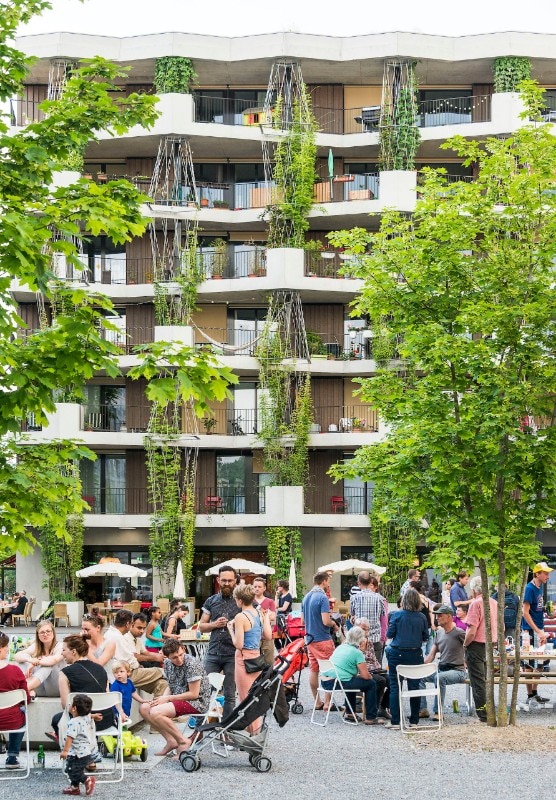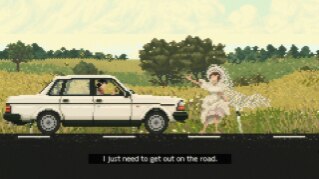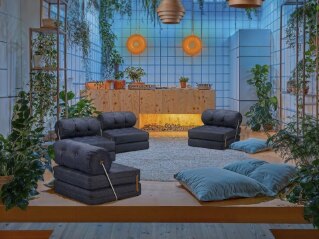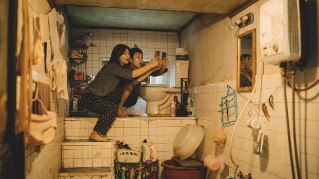Domus 1048, July-August issue, focuses on nature, and our task to act actively on it. After the last few months in which we have had the opportunity to reflect on how we live, in his editorial David Chipperfield analyzes the new challenge we need to take up to realign our attitude and our role within an ecological system that now depends on us.
In this month’s Agenda Bernd Scherer explains how, after the coronavirus crisis, the time has come to develop “a new alphabet of living and living in society”, and to imagine new spatial situations inspired by biology for life. Luis Fernández-Galiano stresses the need to make our cities more compact and define their limits if they are to become the sustainable ecosystems we need. According to Vittorio Magnago Lampugnani, the city’s project must reaffirm itself as an “autonomous discipline” that carefully builds the foundations of an ever better urban form.
David Chipperfiled talks to Finn Williams, CEO of Public Practice, a British social enterprise engaged in dialogue with local government. For the Affinities section, Emanuel Christ and Christoph Gantenbein bring together the architects of three residential projects in Paris in a conversation about context, typology, form and tradition.
In Design and Art Jessica Helfand talks about design as “a solo activity” based on resourcefulness and patient experimentation. The monthly column curated by Jasper Morrison and Francesca Picchi focuses on the young talents of the Milanese creative community. Theatre director Robert Wilson illustrates the furnishing element that is constant in his work and of which he has a personal collection: the chair.
Among the Reflections, we publish the freehand drawings made by Paul Robbrecht for the exhibition that marked an important moment in the beginning of his career. Tim Snelson helps to distinguish the complexities of architecture’s environmental impact through its built-in carbon footprint. From Milan, Giorgio Goggi analyses the recent “Open Roads” initiative launched by the municipality, and Aida Edemariam reflects on a place in Addis Ababa that marked his childhood. Finally, Fulvio Irace revisits Emilio Ambsz’s work from the Domus archive, with his seminal thought on the relationship between ‘artificial’ and ‘natural’.
In this month’s Diary, pages dedicated to current affairs, Pippo Ciorra reflects on the missed Venice Biennale. In the section dedicated to art, Valentina Petrucci talks about how the relationship between art and architecture is inseparable and complementary. With two writings by Yehuda Safran and Fulvio Irace, we remember Dietmar Steiner and Enrico Astori, two fundamental voices for architecture, design and the Domus universe, who have left us in recent months. This month's section ends with a conversation between editorial director Walter Mariotti and Marco Tronchetti Provera, executive vice president and CEO of Pirelli.
We close with the insert Megaprojects, opened by a long essay by Richard Ingersoll, who writes about how we could rethink the scale of contemporary infrastructure, from low-impact interventions, to the change of scale. This is followed by a selection of projects curated by Loredana Mascheroni, buildings characterized by the ability to respond adequately to functional and social demands. Finally, interviews with the international and multidisciplinary team of the German pavilion of the Venice Biennale, Siv Helene Stangeland, curator of the Nordic Pavilion, Dutch architect Francien van Westrenen and Ippolito Pestellini Laparelli, former partner and collaborator of OMA and founder of the interdisciplinary agency 2050+.

Franke presents “The House of Well-Living” at Fuorisalone
With a multi-sensory installation, Franke will welcome visitors to its flagship store during Milan Design Week and present the year's new products.































